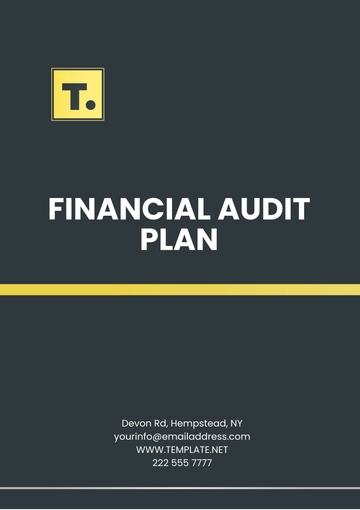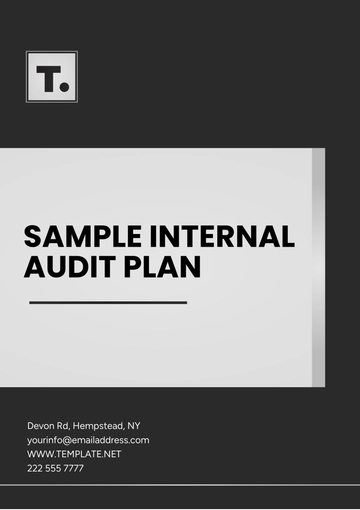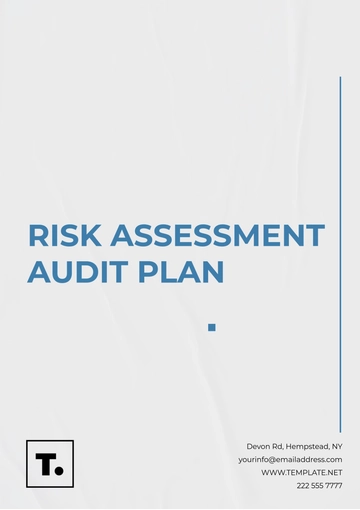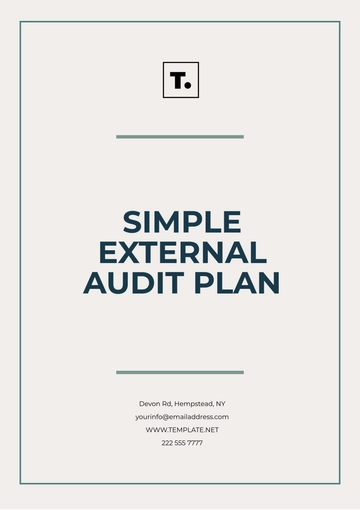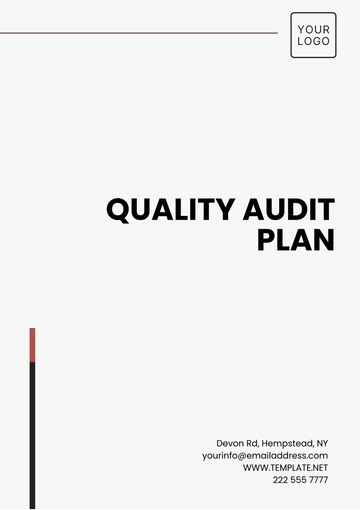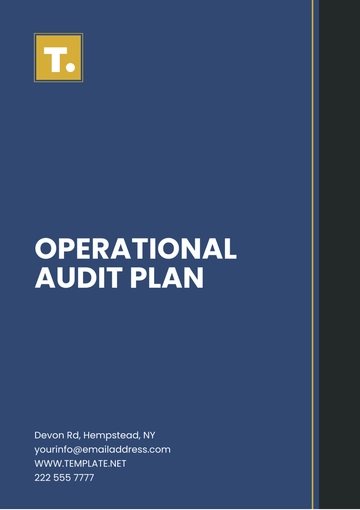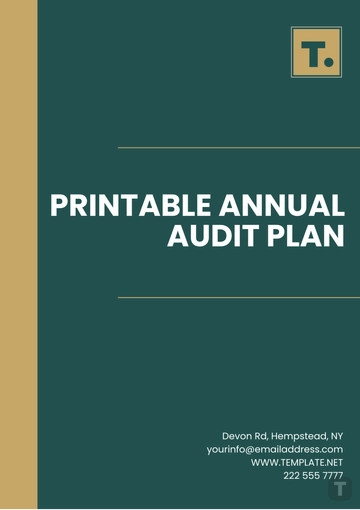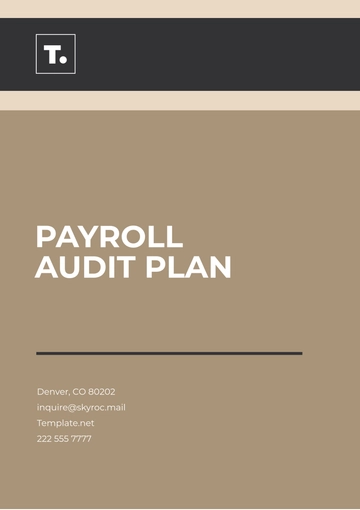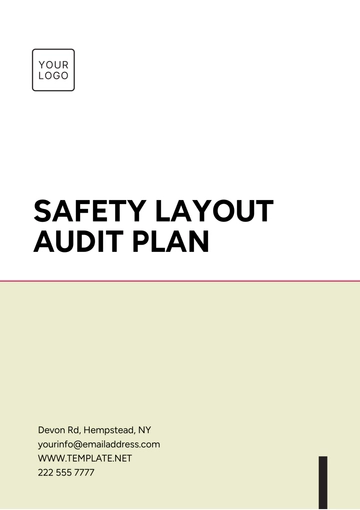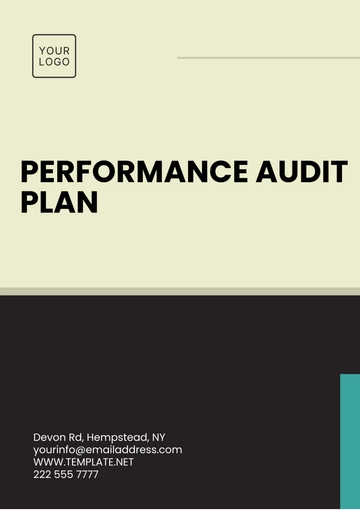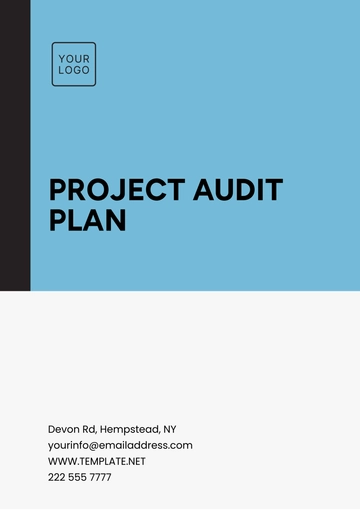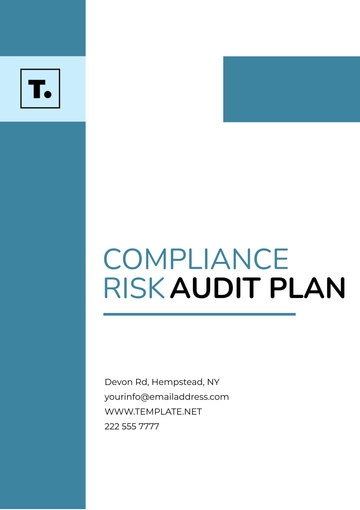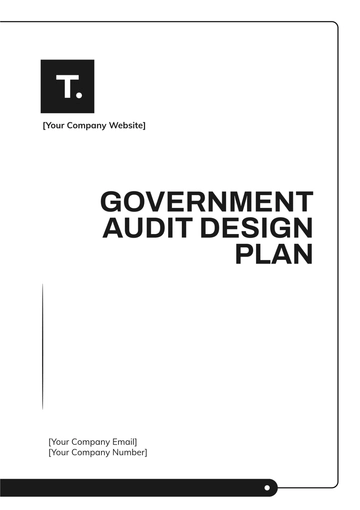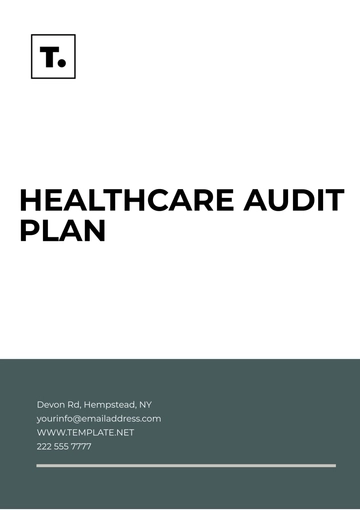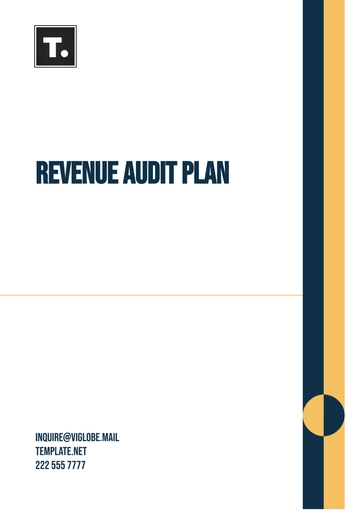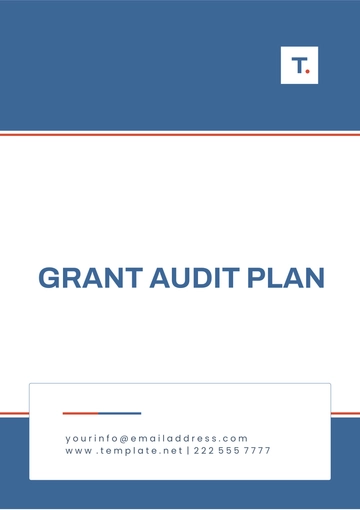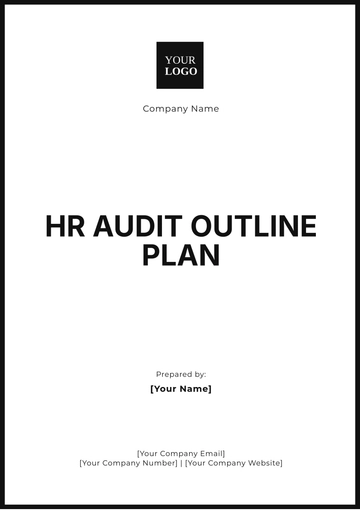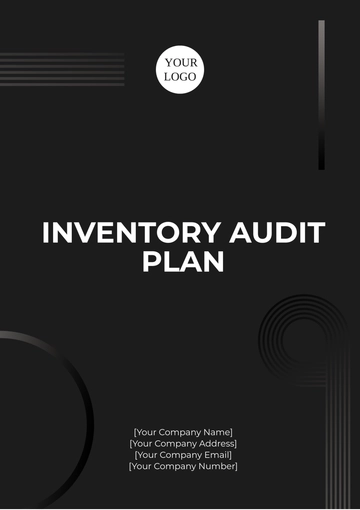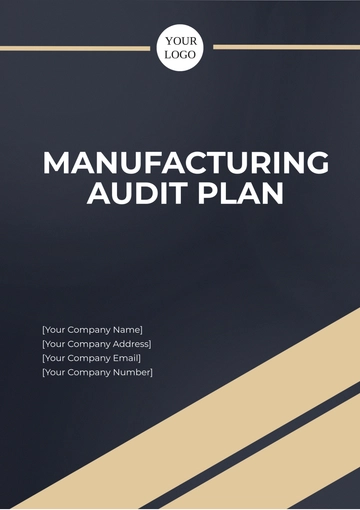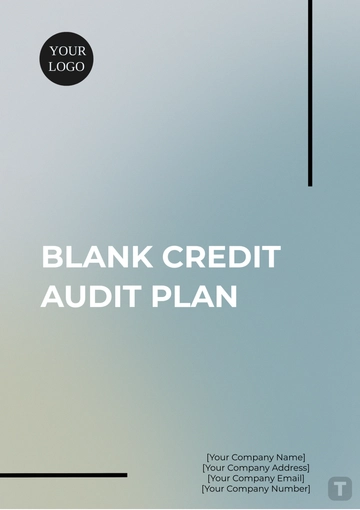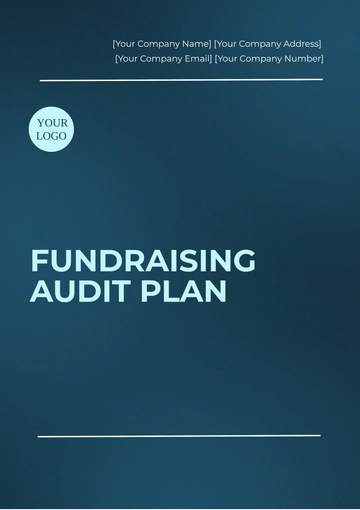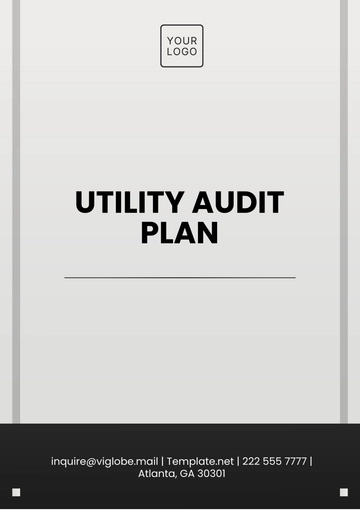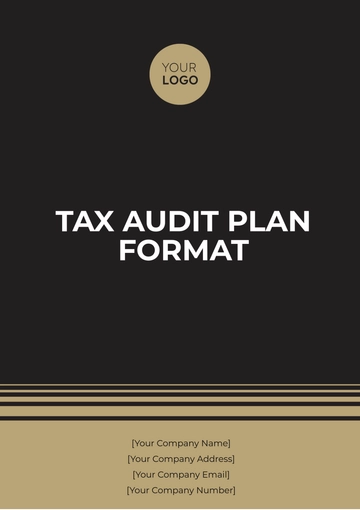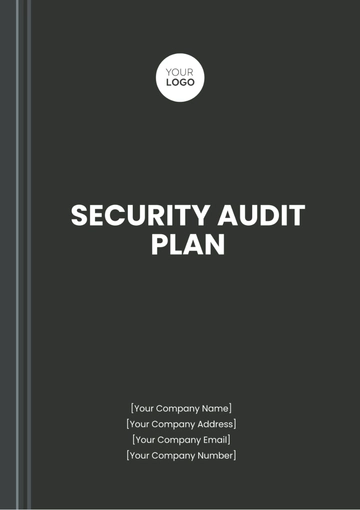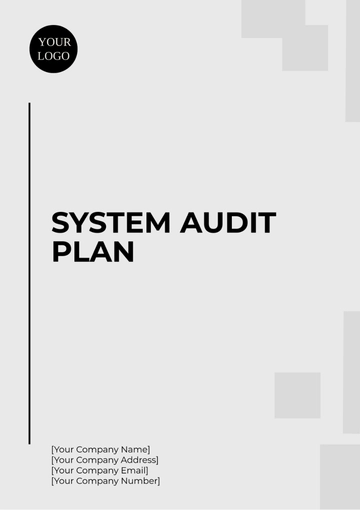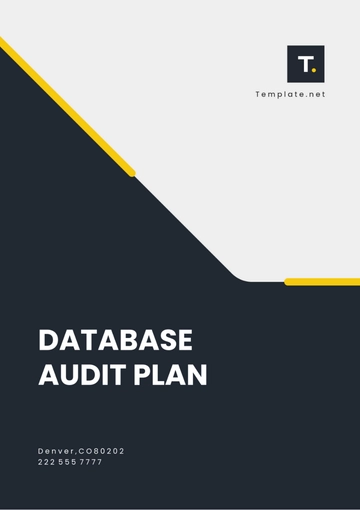Free Finance Audit Plan
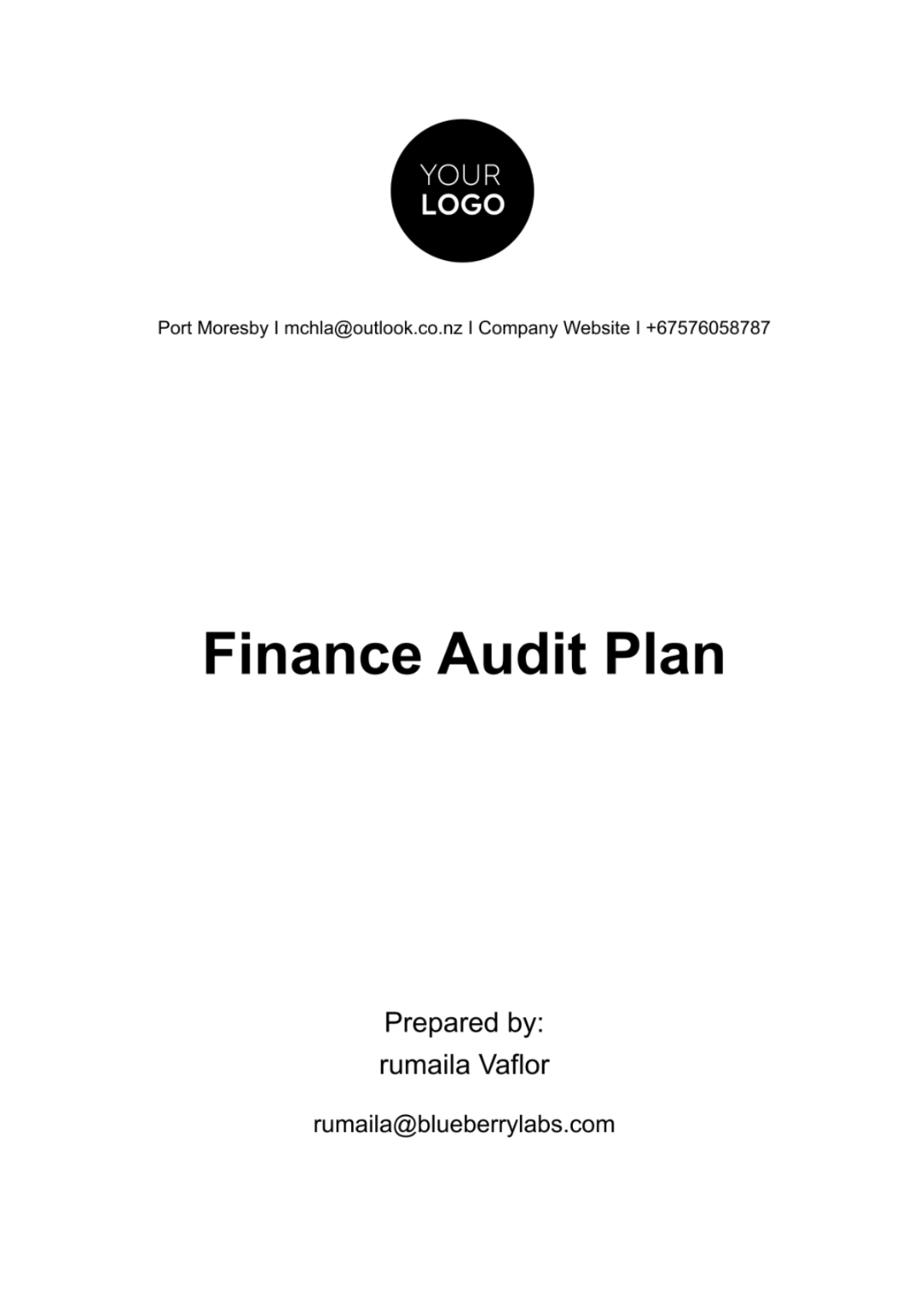
A. Executive Summary
The upcoming finance audit, scheduled for the fiscal year [2050-2051], is designed to rigorously scrutinize and evaluate [Your Company Name]'s financial records, ledgers, and statements. This comprehensive audit aims to verify the accuracy, completeness, and adherence of our financial documentation to generally accepted accounting principles (GAAP) and applicable U.S. legal standards. Furthermore, the audit will assess the effectiveness of internal controls, identify areas for financial improvement, and ensure transparent and reliable financial reporting to stakeholders. This process is integral to maintaining our company's fiscal integrity and upholding our commitment to financial excellence and accountability.
B. Audit Objectives
The primary objective of this audit is to deliver an impartial and fact-based view on the state of our company's financial practices. This evaluation will ascertain whether financial reporting is accurate, complete, and in compliance with relevant regulations and accounting standards. The secondary objective is to proactively identify areas for enhancing efficiency and effectiveness in financial management.
C. Scope of the Audit
The audit will cover financial transactions and activities carried out within the fiscal year [2050-2051], including an examination of income statements, balance sheets, cash flow statements, and the underlying entries in our accounting records.
D. Audit Methodology
The methodology for our upcoming finance audit is strategically developed to ensure a comprehensive and efficient review of [Your Company Name]'s financial processes and records. Our approach will consist of the following key components:
Advanced Data Analysis Technologies: Utilizing cutting-edge software tools and analytical techniques, we will analyze large datasets to detect anomalies, trends, and discrepancies. This will include the use of predictive analytics, artificial intelligence, and data mining to provide deep insights into financial transactions and patterns.
Targeted Interview Techniques: In-depth interviews with key personnel will be conducted to gain insights into financial processes and controls. These interviews will be structured to gather crucial information on workflow, authorization protocols, and risk management practices.
Manual Review of Evidence: Critical financial documents, such as invoices, receipts, and bank statements, will be meticulously examined to validate the integrity of the financial records. This manual inspection complements our technological approach, ensuring no aspect of the financial reporting is overlooked.
Risk-Focused Approach: The audit will prioritize areas with higher risk profiles, such as revenue recognition, asset valuation, and complex financial transactions. This focus ensures that resources are effectively allocated to the areas of greatest concern.
Continuous Improvement Feedback Loop: Throughout the audit, findings and insights will be continuously evaluated to refine the audit process in real-time. This approach allows for adaptive changes to the methodology, ensuring the highest level of audit efficiency and effectiveness.
E. Risk Assessment
This section of the Finance Audit Plan outlines our approach to identifying and evaluating risks associated with [Your Company Name]'s financial reporting. The goal is to ensure a comprehensive understanding of potential risks, forming the foundation for our audit strategy and procedures.
Risk Type | Assessment Approach | Objective |
|---|---|---|
Inherent Risks | Analyze industry trends, historical data, and specific financial transactions to identify inherent risks. | To identify potential areas of misstatement due to error or fraud. |
Control Risks | Evaluate the effectiveness of internal control systems through testing and observation. | To assess the possibility of misstatements not being prevented or detected by internal controls. |
Detection Risks | Review the adequacy of audit procedures and sampling techniques. | To minimize the risk that material misstatements go undetected during the audit process. |
F. Materiality and Sampling
In this section, we detail the strategies for determining materiality and executing sampling during our financial audit. Our approach is designed to ensure that significant discrepancies are identified and that the sample results are representative and unbiased.
Aspect | Strategy | Purpose |
|---|---|---|
Materiality | Establish thresholds based on quantitative benchmarks and qualitative judgments. Analyze the impact of errors on overall financial statements. | To identify and focus on transactions and balances that are significant to the financial statements. |
Sampling Method | Implement stratified random sampling, segregating data into relevant strata before random selection. | To ensure a representative and unbiased selection across all sections of the financial data. |
Sampling Size | Determine sample size based on risk assessment, materiality levels, and the total volume of transactions. | To achieve an appropriate balance between thoroughness and efficiency in the audit process. |
G. Audit Timeline and Milestones
This section presents a structured timeline for the audit process, spanning over [3] weeks. It outlines key milestones and their scheduled dates to ensure an organized and timely progression from planning to the final reporting of the audit.
Milestone | Scheduled Date | Description |
|---|---|---|
Planning | [Month, Day, Year] | Setting objectives, scope, and preparing the team. |
Risk Assessment | [Month, Day, Year] | Evaluating financial reporting risks. |
Fieldwork Start | [Month, Day, Year] | Beginning detailed financial examination. |
Interim Report | [Month, Day, Year] | Providing early findings and issues. |
Fieldwork End | [Month, Day, Year] | Completing evidence collection. |
Draft Report | [Month, Day, Year] | Compiling initial findings and recommendations. |
Management Review | [Month, Day, Year] | Discussing draft report with management. |
Final Report | [Month, Day, Year] | Delivering the finalized audit report. |
Audit Close | [Month, Day, Year] | Concluding the audit and finalizing documentation. |
H. Resource Allocation
In this section, we detail the composition of the audit team and the allocation of responsibilities. The team consists of experienced professionals, each assigned roles that leverage their expertise and knowledge to ensure a thorough and effective audit.
Team Member | Responsibilities |
|---|---|
Lead Auditor | Overall audit management, final report review. |
Financial Analyst | Detailed financial data analysis and review. |
Internal Controls Specialist | Evaluating and testing internal controls. |
Compliance Expert | Ensuring adherence to legal and regulatory standards. |
I. Internal Control Evaluation
The evaluation of internal control systems is a vital element of our audit process. It aims to assess the effectiveness of these controls in mitigating risks and ensuring the accuracy of financial reporting at [Your Company Name]. This comprehensive evaluation is structured into several key areas:
Control Environment Assessment: Examining the overall control framework, including policies, procedures, and company culture that influences internal control effectiveness.
Risk Management Processes: Analyzing how risks are identified, assessed, and managed, particularly those affecting financial reporting.
Control Activities Review: Scrutinizing specific control activities and mechanisms in place, such as authorization, verification, reconciliation, and segregation of duties.
Information and Communication Systems: Evaluating the systems used for financial reporting and communication, both internally and externally, for their effectiveness in supporting accurate and reliable financial data processing.
Monitoring of Controls: Assessing the processes in place for monitoring the effectiveness of internal controls over time, including regular reviews and updates to the control systems.
J. Reporting and Communication Plan
Upon completion of the audit, a detailed report will be compiled and delivered to the company's management and audit committee. Throughout the audit process, there will be ongoing communication with these stakeholders to discuss findings, provide updates, and address any arising issues.
- 100% Customizable, free editor
- Access 1 Million+ Templates, photo’s & graphics
- Download or share as a template
- Click and replace photos, graphics, text, backgrounds
- Resize, crop, AI write & more
- Access advanced editor
Discover the ultimate Finance Audit Plan Template at Template.net, expertly crafted for precision and efficiency. This fully editable and customizable template is designed to streamline your audit process. Conveniently editable in our Ai Editor Tool, it adapts seamlessly to your specific needs, ensuring a thorough and effective audit planning.
You may also like
- Finance Plan
- Construction Plan
- Sales Plan
- Development Plan
- Career Plan
- Budget Plan
- HR Plan
- Education Plan
- Transition Plan
- Work Plan
- Training Plan
- Communication Plan
- Operation Plan
- Health And Safety Plan
- Strategy Plan
- Professional Development Plan
- Advertising Plan
- Risk Management Plan
- Restaurant Plan
- School Plan
- Nursing Home Patient Care Plan
- Nursing Care Plan
- Plan Event
- Startup Plan
- Social Media Plan
- Staffing Plan
- Annual Plan
- Content Plan
- Payment Plan
- Implementation Plan
- Hotel Plan
- Workout Plan
- Accounting Plan
- Campaign Plan
- Essay Plan
- 30 60 90 Day Plan
- Research Plan
- Recruitment Plan
- 90 Day Plan
- Quarterly Plan
- Emergency Plan
- 5 Year Plan
- Gym Plan
- Personal Plan
- IT and Software Plan
- Treatment Plan
- Real Estate Plan
- Law Firm Plan
- Healthcare Plan
- Improvement Plan
- Media Plan
- 5 Year Business Plan
- Learning Plan
- Marketing Campaign Plan
- Travel Agency Plan
- Cleaning Services Plan
- Interior Design Plan
- Performance Plan
- PR Plan
- Birth Plan
- Life Plan
- SEO Plan
- Disaster Recovery Plan
- Continuity Plan
- Launch Plan
- Legal Plan
- Behavior Plan
- Performance Improvement Plan
- Salon Plan
- Security Plan
- Security Management Plan
- Employee Development Plan
- Quality Plan
- Service Improvement Plan
- Growth Plan
- Incident Response Plan
- Basketball Plan
- Emergency Action Plan
- Product Launch Plan
- Spa Plan
- Employee Training Plan
- Data Analysis Plan
- Employee Action Plan
- Territory Plan
- Audit Plan
- Classroom Plan
- Activity Plan
- Parenting Plan
- Care Plan
- Project Execution Plan
- Exercise Plan
- Internship Plan
- Software Development Plan
- Continuous Improvement Plan
- Leave Plan
- 90 Day Sales Plan
- Advertising Agency Plan
- Employee Transition Plan
- Smart Action Plan
- Workplace Safety Plan
- Behavior Change Plan
- Contingency Plan
- Continuity of Operations Plan
- Health Plan
- Quality Control Plan
- Self Plan
- Sports Development Plan
- Change Management Plan
- Ecommerce Plan
- Personal Financial Plan
- Process Improvement Plan
- 30-60-90 Day Sales Plan
- Crisis Management Plan
- Engagement Plan
- Execution Plan
- Pandemic Plan
- Quality Assurance Plan
- Service Continuity Plan
- Agile Project Plan
- Fundraising Plan
- Job Transition Plan
- Asset Maintenance Plan
- Maintenance Plan
- Software Test Plan
- Staff Training and Development Plan
- 3 Year Plan
- Brand Activation Plan
- Release Plan
- Resource Plan
- Risk Mitigation Plan
- Teacher Plan
- 30 60 90 Day Plan for New Manager
- Food Safety Plan
- Food Truck Plan
- Hiring Plan
- Quality Management Plan
- Wellness Plan
- Behavior Intervention Plan
- Bonus Plan
- Investment Plan
- Maternity Leave Plan
- Pandemic Response Plan
- Succession Planning
- Coaching Plan
- Configuration Management Plan
- Remote Work Plan
- Self Care Plan
- Teaching Plan
- 100-Day Plan
- HACCP Plan
- Student Plan
- Sustainability Plan
- 30 60 90 Day Plan for Interview
- Access Plan
- Site Specific Safety Plan

